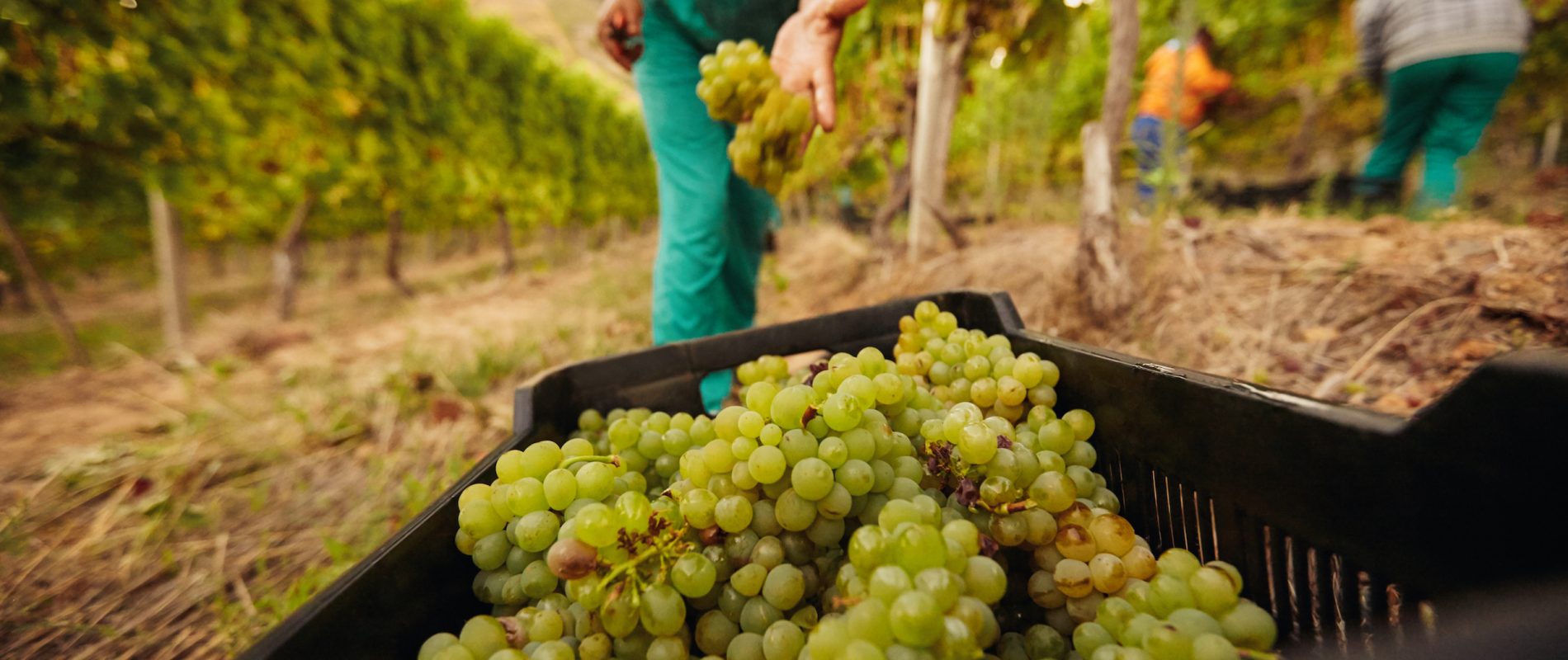Fruit picking jobs—what to expect
Harvesting techniques
The method required depends on the type of fruit or vegetable you’re harvesting. You may have to reach up to grab apples from a tree or bend down to pick strawberries, use a ladder or be on your knees.
Instructions depends on the farm manager as well—you can be asked to harvest the entire tree or crop at once or be selective with what you pick:
- Colour picking is selecting fruits that are a specific colour, usually leaving out those that aren’t ripe enough or haven’t reached full maturity.
- Size picking is selecting fruits that are a certain size or the right calibre (i.e. produce the size of a knife, bigger than a large ring, etc.).
- Strip picking is harvesting the entire branch, tree, etc. regardless of the size or maturity.
Now let’s review a few typical methods and common fruits and vegetables!
Most vegetables and some fruits like strawberries, bell peppers (or “capsicums” Down Under), cantaloupes (“rock melons”) and watermelons: You have to bend down a million times during the workday, which can be pretty exhausting, especially when it’s very hot.
Cherries: Once you master the technique (gentle hand on the fruit!) it can be a well-paid job. The work itself isn’t too hard on the body either—you may need to use a ladder to reach them but you won’t have to bend down, and a full bag of cherries isn’t too heavy. Because cherry picking is often a… cherry picked job, competition can be tough.
Mandarin oranges: Competition can be fierce here again because picking this type of citrus is considered a well-paid job. You will have to clip or carefully twist and pull the fruit from the tree. Note that mandarin trees have thorns, so watch out for your hands and clothes!
Lemons: Much like mandarin oranges, lemon trees are thorny. The harvesting method is the same as well—twist and pull the fruit from the tree. Most of the time, you will need to work on a ladder.
Oranges: Yep, thorny tree again. Oranges are pretty big so you’ll fill up your bin quickly enough, which is good news when you get paid by the bin. However, the rate per bin may be lower than for other fruits (e.g. lemons).
Apricots: You will be asked to pick them gently and use a ladder. The ripening period may extend over a three-week period for some varieties, so picking apricots may span this time frame.
Apples: Perched on a ladder, you will have to roll the apple upwards off the branch, give a little twist and fill up a large bag you’re wearing on the front. When your bag is full, you leave your picking spot to empty it into a bag. Apples are heavier than other fruits and need to be picked carefully—you have to hold the fruit in the palm of your hand, placing your index finger on the stem to avoid any bruising. Wet fruit spoils more quickly, so apples aren’t harvested when it rains or early in the morning when they are covered with dew.
Pears: The harvest method is the same as for apples. However, pears are heavier (so the work is more physical) and less prone to bruising than apples. They can be picked regardless of the weather.
Asian pears: “Nashi” (their Japanese name) are a species of popular and quite pricey pear tree native to East Asia. They need to be handled gently, so pickers are often paid by the hour rather than by the bin. Good news—the trees are shorter so you won’t need to use a ladder! Asian pear harvest starts in February and ends around September/October. Many pear growers tend to grow Asian pears as well. You’ll find them in Western Australia, Tasmania, New South Wales and especially in the Goulburn Valley (Victoria).
Grapes: Grape is typically harvested very early in the morning and work days are short. Armed with garden pruners or a pair of scissors, you will have to hold a cluster of grapes in one hand and snip the whole cluster off the vine and gently place each bunch in a bin.
Avocados: You will have to carefully cut the stem of the avocado, using a pole pruner to pick those above arm’s reach (but no ladder required!). Attached to the pole is a catching basket or bag that captures the fruit, preventing it from falling to the ground and bruising. Avocados are heavy but it’s still considered a relatively “easy” harvest job.
Mangoes and peaches: Both fruits contain urushiol, a substance found in the sap, skin, stem, and leaf that can trigger an allergic reaction—some workers end up with a skin rash (contact dermatitis), swelling or blisters. It’s best to work with gloves and give up the job if you develop severe allergy symptoms. Note that you should also avoid eating peaches or mangoes in the weeks following allergy symptoms.
Note: Most pickers are allowed to listen to music or chat while working (phew!).
Fruits and vegetables packing
Once fruits and vegetables are picked, they have to be sorted, weighed and packed. The job is easier on your back but you may have to stand on your feet all day and the environment is similar to factory work.
The key is to sort and fit a certain number of produce, i.e. cantaloupes, into a box. Some workers pack small cantaloupes, others handle medium cantaloupes, etc.
This job can be a break from fruit picking—it’s great if you can pick one week and pack the next!—but it’s repetitive and you may not be allowed to listen to music or chat with your co-workers.
Weeding
“A weed is a plant in the wrong place at the wrong time” and a threat to crops. You will be tasked with removing unwanted plants from a specific area and it may feel like boot camp training since you’ll spend your day crawling in the field.
Pruning
Pruning means trimming a tree, shrub, or bush by cutting away dead or overgrown branches or stems, especially to encourage growth. It’s a skilled job you can learn on site and work your way into it, and it pays relatively well. However, pruning season is typically in late fall or during the winter, after harvest time, so expect adverse weather conditions (cold temperatures, rain, etc.).
Thinning
Before harvest time, thinning is often needed to remove some plants to allow the others more room to grow. You will be shown the smallest fruits to pick up and learn a few techniques. This task requires patience and a good eye.
Planting
Planting tasks vary depending on the fruit or vegetable. There are two main versions of the job, indoors and outdoors.
Indoors, you may be working in a factory-like environment, placing seeds on trays moving rapidly on a conveyor belt. You can also be asked to prepare trays, i.e. filling them with soil, digging small holes with a pencil and placing a seed in each hole. You may end up with blisters on your hands but it’s a more relaxed environment than trying to keep up with the moving conveyor belt!
For tree planting, you will work outdoors. Planters carry up to 200 seedlings around their waist at a time while walking along prepared mounds on the plantation. Planting sprouted lettuce seeds or seedlings is done at ground level—you will have to bend down a lot and it’s dirty work.
Ideally, you will have the chance to work on different tasks over the span of a few weeks. It’s the best way to learn new skills and not get bored.

















 Français
Français English
English




(2) Comments
Please when it’s time for the application, fruit picking, let me know
Hi, have you read chapter 8?
{{like.username}}
Loading...
Load more